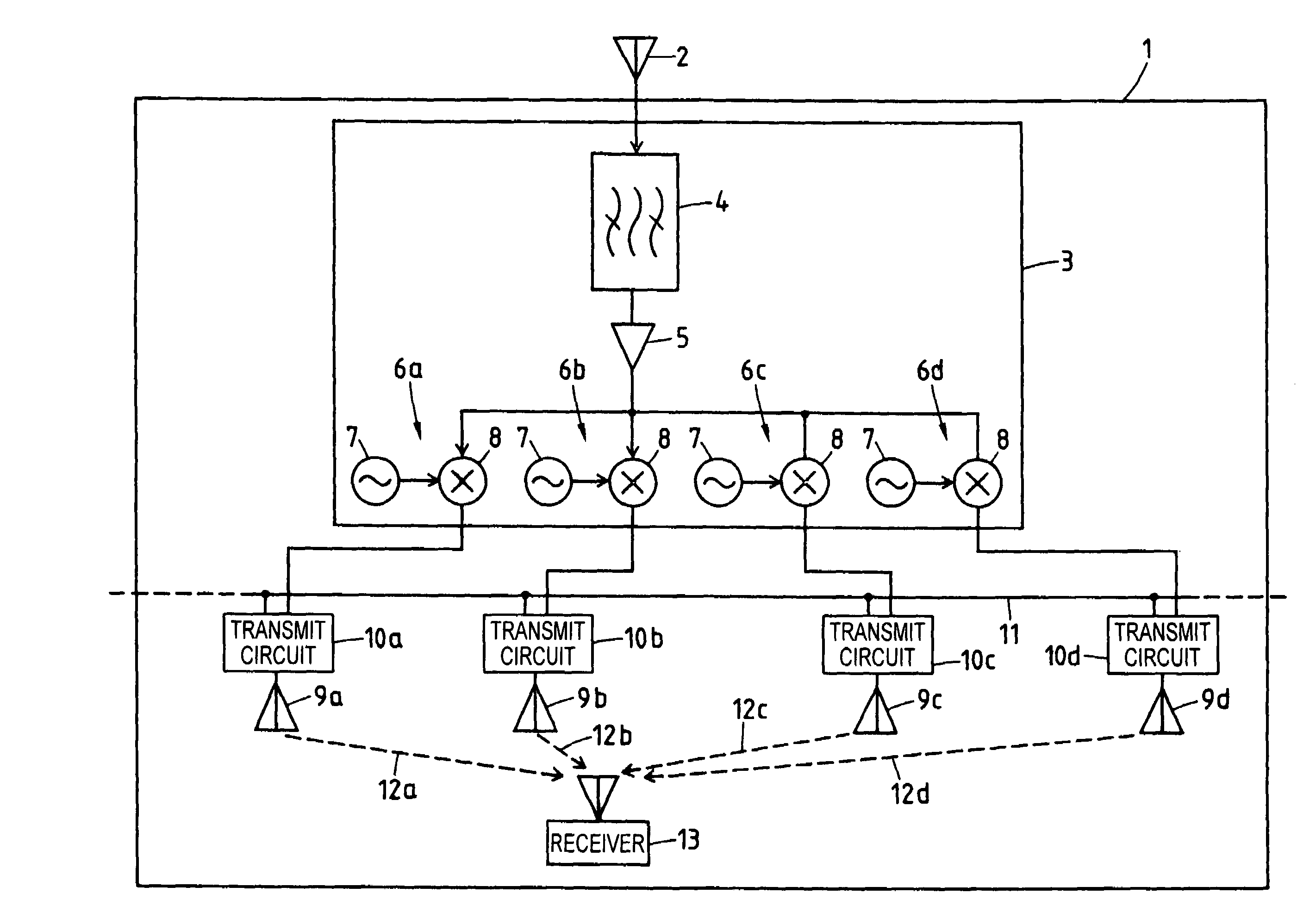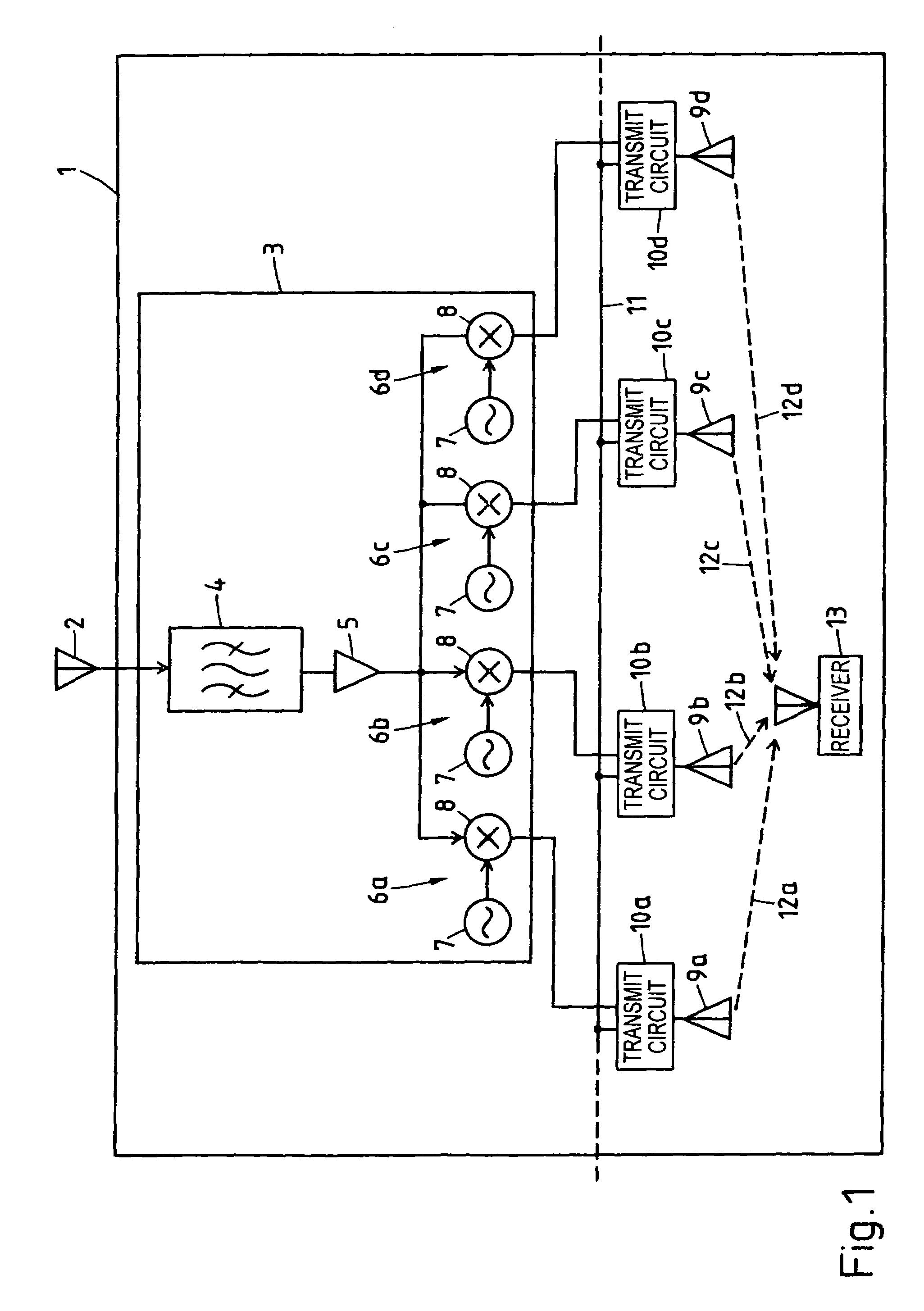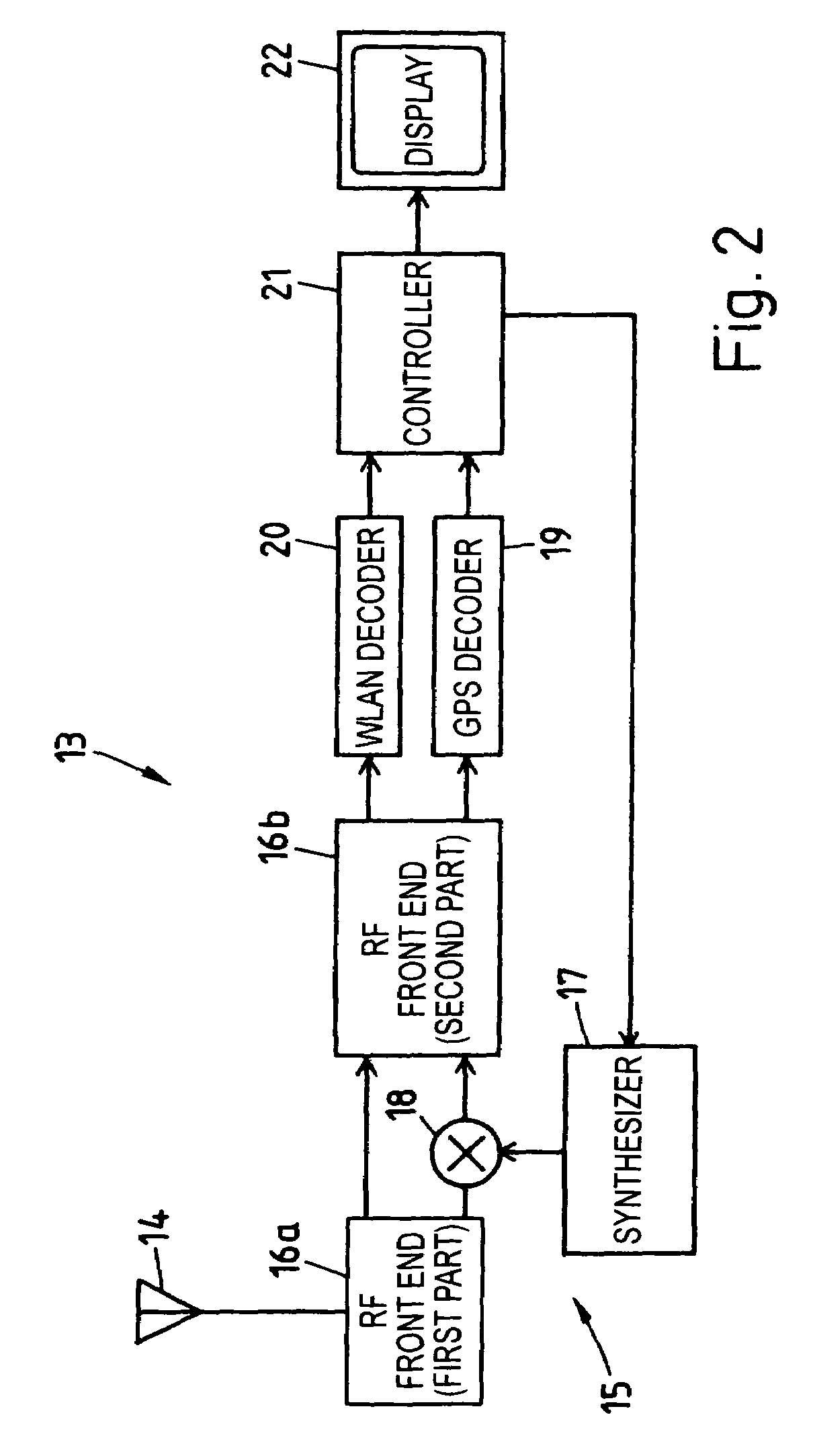Positioning system
a positioning system and positioning technology, applied in direction finders using radio waves, measurement devices, instruments, etc., can solve the problems of large hardware investment, extremely weak signals, and virtually non-existent signals,
- Summary
- Abstract
- Description
- Claims
- Application Information
AI Technical Summary
Benefits of technology
Problems solved by technology
Method used
Image
Examples
Embodiment Construction
[0010]On the roof of a building 1 a receive antenna 2 for receiving primary positioning signals which usually stem from GPS satellites but may in part come from pseudolites and similar devices as well, is mounted. It is connected by an RF cable to a repeater 3 which comprises a bandpass filter 4 and a low noise amplifier 5 whose output is connected to four parallel conversion circuits 6a–d. Each of the conversion circuits 6a–d comprises an oscillator 7 for producing a sine-shaped conversion signal with a specific fixed frequency and a mixer 8 for mixing the same with the output signal of low noise amplifier 5.
[0011]The outputs of conversion circuits 6a–d are each connected by an RF cable to one of transmit antennas 9a;b;c;d which are mounted at fixed locations inside building 1, via one of transmit circuits 10a;b;c;d. Each of the latter contains an interface connecting it to a LAN cable 11 and is capable of converting data received via the same into 802.11 WLAN format and vice versa...
PUM
 Login to View More
Login to View More Abstract
Description
Claims
Application Information
 Login to View More
Login to View More - R&D
- Intellectual Property
- Life Sciences
- Materials
- Tech Scout
- Unparalleled Data Quality
- Higher Quality Content
- 60% Fewer Hallucinations
Browse by: Latest US Patents, China's latest patents, Technical Efficacy Thesaurus, Application Domain, Technology Topic, Popular Technical Reports.
© 2025 PatSnap. All rights reserved.Legal|Privacy policy|Modern Slavery Act Transparency Statement|Sitemap|About US| Contact US: help@patsnap.com



